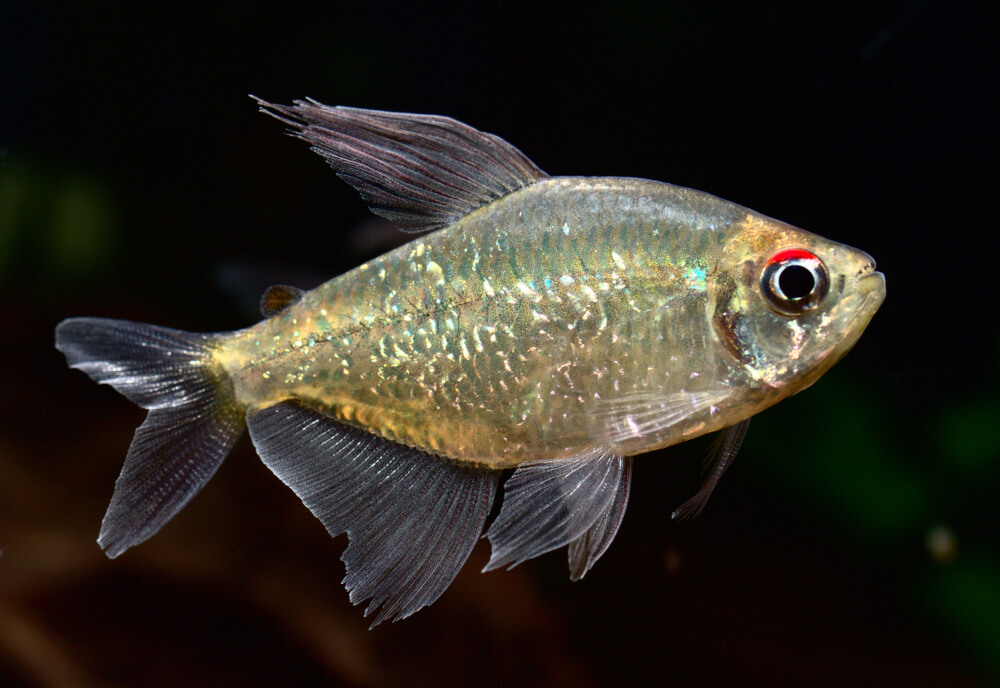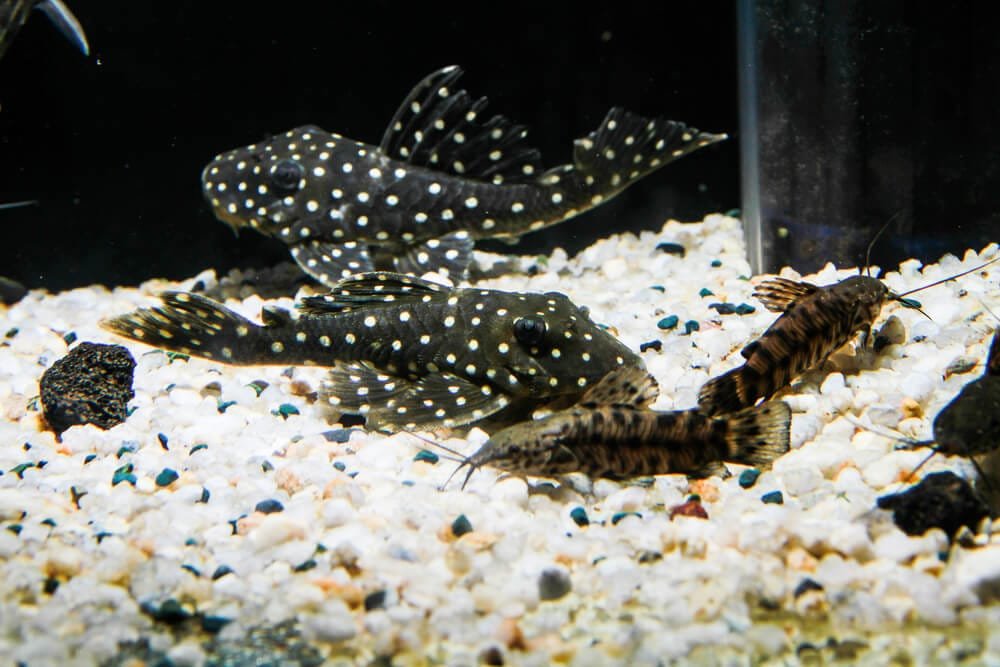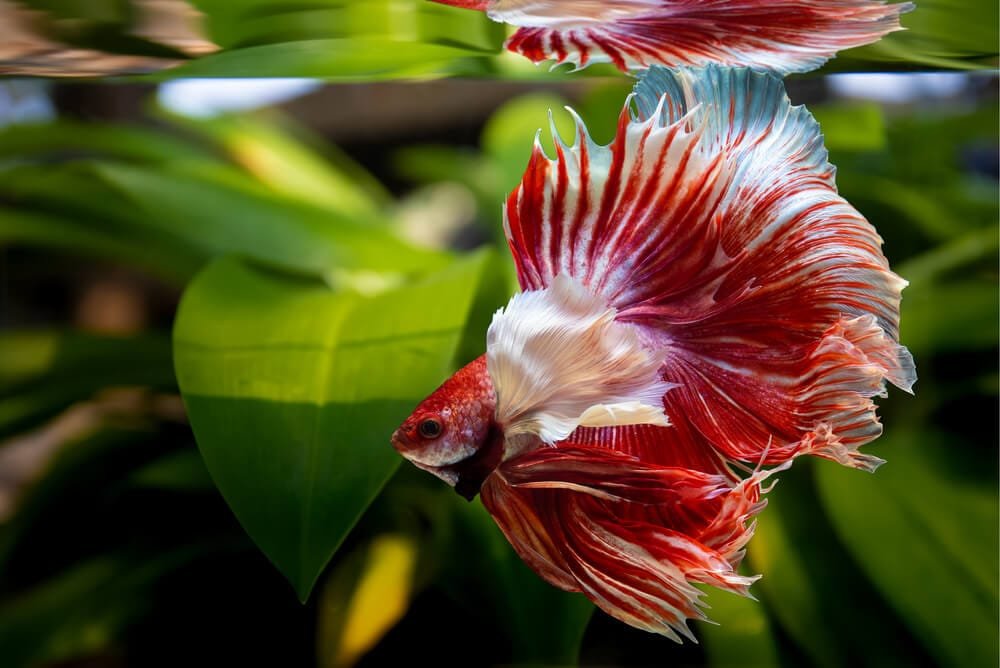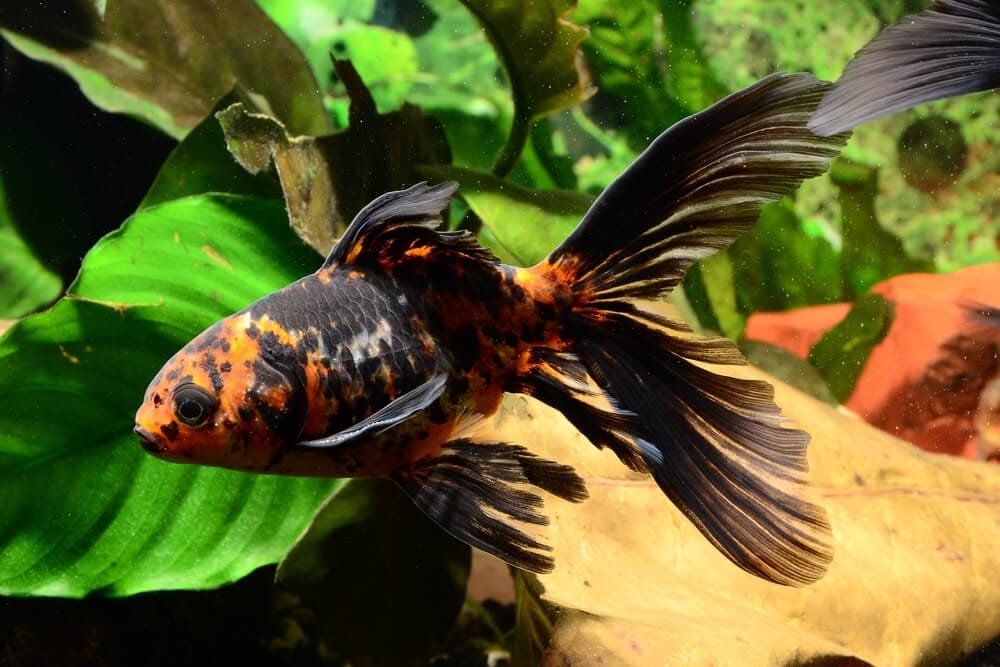What Are Some Common Tank Mates For Molly Fish?
If you’re a proud owner of Molly Fish, you may be wondering what other fish would make suitable companions for them in your tank. Well, fret not, because we’ve got you covered! In this article, we’ll explore some common tank mates for Molly Fish, helping you create a harmonious and vibrant aquatic environment for your beloved pets. So, let’s dive right in and discover the perfect companions that will complement your Molly Fish swimmingly!
Freshwater Fish
Freshwater fish make a great addition to any aquarium, adding beauty and vibrancy to your underwater world. Whether you’re a beginner or an experienced aquarist, there are a variety of freshwater fish species that you can consider for your tank. In this article, we will explore different types of freshwater fish and their suitability as tank mates for various species. Let’s dive in!
Guppies
Guppies are one of the most popular freshwater fish species among aquarium enthusiasts. Known for their vibrant colors and graceful tails, these small-sized fish are a wonderful addition to any community tank. Guppies are quite peaceful and get along well with other peaceful fish species. They are also known as livebearers, meaning they give birth to live fry instead of laying eggs.
Platies
Platies, like guppies, are another popular choice for freshwater aquariums. They come in a variety of colors and patterns, making them a visually appealing choice. Platies are known for their peaceful nature and sociability, making them compatible with a wide range of tank mates. They are livebearers as well, so you can expect to see baby platies swimming around in your tank.
Swordtails
Swordtails are another livebearer species that make delightful additions to community tanks. As their name suggests, male swordtails have a distinct elongated tail that resembles a sword. These fish are peaceful and get along well with most other community fish, as long as the tank is large enough to accommodate their size.
Tetras
Tetras are a diverse group of freshwater fish that come in various colors and sizes. They are known for their peaceful nature and are a perfect choice for community aquariums. Some popular species of tetras include neon tetras, cardinal tetras, and rummy nose tetras. Their small size and schooling behavior make them a visually stunning addition to any tank.
Livebearers
Livebearers are a fascinating group of freshwater fish that give birth to live young instead of laying eggs. These fish are known for their vibrant colors and active nature, making them a popular choice among aquarists. Let’s explore some common livebearer species and their compatibility as tank mates.
Guppies
As mentioned earlier, guppies are one of the most popular livebearer species. They are relatively easy to care for and are highly adaptable to various water conditions. Guppies are peaceful fish and can coexist with a wide range of other community fish. They are an excellent choice for beginners due to their resilience and affordability.
Platies
Platies, being livebearers as well, are known for their wide range of colors and patterns. They are peaceful and sociable, making them suitable tank mates for other peaceful species. Platies thrive in well-maintained aquariums with ample hiding spots and plants. They are relatively hardy fish, making them a good choice for beginners.
Swordtails
Swordtails, with their distinct elongated tails, are captivating livebearers that bring elegance to any aquarium. They are compatible with a variety of community fish, as long as they are kept in a spacious tank with plenty of swimming space. Swordtails are generally peaceful, but males may occasionally display aggression towards each other. It is recommended to have a higher female-to-male ratio to minimize aggression.
Community Fish
If you’re looking to create a vibrant and diverse community of fish in your aquarium, community fish are the way to go. These species are generally peaceful and can coexist harmoniously with other fish. Let’s explore some common community fish species and their compatibility as tank mates.
Neon Tetras
Neon tetras are perhaps one of the most iconic and widely recognized freshwater fish. Known for their vibrant neon blue and red stripes, these small-sized fish are a stunning addition to any community tank. Neon tetras are peaceful and prefer to live in schools, so it’s best to keep them in groups of six or more for their well-being. They are compatible with other small, peaceful fish species.
Danios
Danios are active and playful fish that add an energetic element to any community tank. They come in various colors and patterns, including zebra danios and pearl danios. Danios are relatively hardy and can adapt to a wide range of water conditions. These fish are best kept in groups, as they are social and thrive in schools.
Corydoras Catfish
Corydoras catfish, also known as cory cats or armored catfish, are peaceful bottom-dwelling fish that bring personality and charm to your tank. They are known for their unique body shape and their habit of scavenging the aquarium floor for food. Corydoras catfish are easy to care for and can coexist with a variety of other peaceful fish species. They are particularly well-suited for community tanks with soft substrate.
Bottom Dwellers
Aquariums with bottom-dwelling fish can create a dynamic and visually appealing underwater scene. These species tend to stay close to the substrate and are often equipped with specialized adaptations for life near the bottom of the tank. Let’s explore some common bottom-dwelling fish species and their compatibility as tank mates.
Corydoras Catfish
As mentioned earlier, corydoras catfish are fantastic bottom-dwelling fish that bring life to the lower regions of your aquarium. They are peaceful and sociable, making them great tank mates for a variety of other fish species. Corydoras catfish are widely known for their eye-catching patterns and their ability to scavenge the tank floor for food.
Plecos
Plecos, or plecostomus catfish, are another popular choice for bottom-dwelling fish. These fish are often admired for their unique appearance, with their armored bodies and sucker-like mouths. Plecos excel at algae control, making them valuable additions to aquariums with an algae problem. However, it’s important to note that some species of plecos can grow quite large, so it’s essential to research the specific species before adding them to your tank.
Loaches
Loaches are a diverse group of bottom-dwelling fish that come in various shapes, sizes, and colors. They are known for their playful and active nature, often burrowing into the substrate or exploring the nooks and crannies of your tank. Loaches are generally peaceful and can coexist with other bottom-dwelling and community fish. Some popular species include the clown loach and the kuhli loach.
Algae Eaters
Algae growth is a common challenge in many aquariums, and it’s important to keep it in check for the overall health of your tank. Luckily, there are several species of freshwater fish that can help control algae growth. Let’s explore some common algae-eating fish species and their compatibility as tank mates.
Otocinclus Catfish
Otocinclus catfish, often referred to as “otos” or “dwarf suckers,” are a popular choice for algae control in freshwater aquariums. These small catfish have a voracious appetite for algae and can help keep your tank clean and healthy. Otocinclus catfish are peaceful and can coexist with a wide variety of community fish. They prefer to live in groups, so it’s best to keep them in schools.
Siamese Algae Eaters
Siamese algae eaters, as their name suggests, are highly efficient at consuming various forms of algae in your tank. They have a sleek, elongated body and a sucker-like mouth that allows them to cling onto surfaces while they feed. Siamese algae eaters are generally peaceful and can coexist with a variety of community fish. However, it’s important to note that they can become territorial towards their own species, so it’s best to keep them in small groups rather than pairs.
Peaceful Invertebrates
If you’re looking to add some diversity and intrigue to your aquarium, consider incorporating peaceful invertebrates. These fascinating creatures can range from shrimp to snails and can bring a sense of balance to your tank. Let’s explore some common peaceful invertebrate species and their compatibility as tank mates.
Ghost Shrimp
Ghost shrimp, also known as glass shrimp, are popular invertebrates that add a unique touch to your aquarium. These transparent shrimp are peaceful and can coexist with a variety of community fish. They are hardy and prefer to scavenge the tank for food. Ghost shrimp are particularly interesting to watch, as their transparent bodies allow you to observe their internal organs and digestive system.
Cherry Shrimp
Cherry shrimp, with their vibrant red coloration, are highly sought after invertebrates among aquarists. These small-sized shrimp are peaceful and can coexist with a wide range of community fish. They are particularly well-suited for planted tanks, as they help control algae growth and feed on decaying plant matter. Cherry shrimp are known for their breeding capabilities, so you can expect to see their population grow if conditions are favorable.
Nerite Snails
Nerite snails are another popular choice for peaceful invertebrates in aquariums. These small snails come in various colors and patterns, adding visual interest to your tank. Nerite snails are excellent algae eaters and can help keep your tank clean and free from excessive algae growth. They are non-aggressive and can coexist with a wide range of community fish.
Schooling Fish
Schooling fish are known for their natural instinct to swim in groups, creating a mesmerizing spectacle in your aquarium. These fish thrive when kept in schools, and their synchronized movement is a sight to behold. Let’s explore some common schooling fish species and their compatibility as tank mates.
Harlequin Rasboras
Harlequin rasboras are an eye-catching species of schooling fish known for their vibrant orange and black markings. These peaceful fish are best kept in schools of six or more to mimic their natural behavior. Harlequin rasboras are compatible with other small, peaceful fish species and prefer a well-planted tank with open swimming spaces.
Rummy Nose Tetras
Rummy nose tetras are a visually stunning schooling fish that bring a splash of color to your aquarium. These fish are known for their distinctive red heads and black tails. Rummy nose tetras are peaceful and sociable, thriving when kept in schools. They are compatible with a variety of other community fish and prefer a well-maintained tank with ample hiding spots and open swimming areas.
Cardinal Tetras
Cardinal tetras, often confused with neon tetras, are another beautiful species of schooling fish. They have a vibrant blue and red coloration, with a striking horizontal blue stripe running across their bodies. Cardinal tetras are peaceful and prefer being kept in schools for their well-being. They are compatible with other small, peaceful fish species and prefer a well-planted tank with subdued lighting.
Shoaling Species
Shoaling species are similar to schooling fish in that they prefer to live in groups, but they are not as tightly coordinated in their movements. Nevertheless, they can still create a visually appealing spectacle in your tank. Let’s explore some common shoaling species and their compatibility as tank mates.
Zebra Danios
Zebra danios are active and playful fish that bring a lively energy to your aquarium. These fish have distinct horizontal stripes that resemble those of a zebra, hence their name. Zebra danios are shoaling fish, meaning they prefer to live in groups of six or more. They are compatible with other peaceful fish species and are relatively easy to care for, making them a popular choice among aquarists.
Glowlight Tetras
Glowlight tetras, with their vibrant red and silver coloration, are a striking addition to any aquarium. These shoaling fish prefer to live in groups, creating a beautiful spectacle when they swim together. Glowlight tetras are peaceful and can coexist with a variety of other community fish. They prefer a well-planted tank with ample hiding spots and subdued lighting.
Ember Tetras
Ember tetras, as their name suggests, have a fiery reddish-orange coloration that adds warmth and vibrancy to your tank. These shoaling fish are best kept in schools of six or more to mimic their natural behavior. Ember tetras are peaceful and can coexist with a variety of other small fish species. They prefer a well-planted tank with ample hiding spots and soft, acidic water conditions.
Colorful Fish
If you want to add a splash of color to your aquarium, consider introducing some vibrant and visually stunning fish species. These colorful fish serve as focal points in your tank and can create a visually striking display. Let’s explore some common colorful fish species and their compatibility as tank mates.
Endler’s Livebearers
Endler’s livebearers are a small-sized fish with a stunning array of colors and patterns. They are highly sought after among aquarists who appreciate their vibrant coloration and active nature. Endler’s livebearers are peaceful and can coexist with other peaceful fish species. They prefer a well-planted tank with plenty of open swimming space.
Rainbowfish
Rainbowfish are known for their iridescent scales that reflect a rainbow of colors when they catch the light. These fish come in various sizes and color variants, adding a breathtaking display of color to your tank. Rainbowfish are generally peaceful and can coexist with other peaceful community fish. They prefer a spacious tank with plenty of swimming space.
Pearl Gouramis
Pearl gouramis, as their name suggests, have a pearly white coloration with beautiful iridescent scales. These peaceful fish make for excellent centerpiece fish in your aquarium. Pearl gouramis can coexist with other peaceful fish species, but it’s important to note that males can be territorial towards each other. It’s best to keep them in pairs or a single male with multiple females.
Similar Water Requirement
When selecting tank mates for your aquarium, it’s essential to consider the water requirements of the different fish species. Some species have specific temperature, pH, and water hardness preferences, so it’s crucial to choose compatible tank mates to ensure their well-being. Let’s explore some fish species that have similar water requirements.
Rosy Barbs
Rosy barbs are lively and colorful fish that prefer slightly alkaline water conditions. These fish are generally peaceful and can coexist with other peaceful species that thrive in similar water parameters. Rosy barbs add a splash of color to your tank with their vibrant pink and red coloration. They prefer a moderate-sized tank that provides ample swimming space.
White Cloud Mountain Minnows
White cloud mountain minnows are small-sized fish that prefer cooler water temperatures. They are hardy and adaptable, making them ideal for beginners or aquariums with slightly cooler conditions. White cloud mountain minnows are peaceful and can coexist with a variety of peaceful fish species. They are known for their metallic silver bodies and vibrant red fins.
In conclusion, there is a wide variety of freshwater fish species that can be suitable tank mates for Molly Fish. Whether you’re looking for peaceful community fish, bottom-dwellers, algae eaters, or colorful additions to your tank, there are plenty of options to choose from. It’s important to consider the specific water requirements and compatibility of different fish species to ensure a harmonious and thriving aquarium environment. With proper research and care, you can create a stunning and vibrant underwater world for your Molly Fish and its tank mates. Happy fishkeeping!






